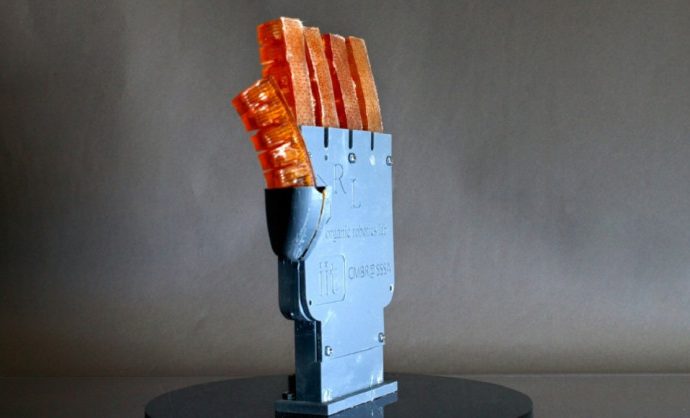The work is the first step in creating robots that can operate for extended periods without overheating.
Source: Interesting Engineering
Who doesn’t want a world where robots can operate for long periods of time without overheating? Apparently researchers at Cornell University are on board.
A team of researchers led by Rob Shepherd, associated professor of mechanical and aerospace engineering, created a soft robot muscle similar to fingers that can sweat to regulate its temperature.
Robots that don’t overheat has been a challenge
In a press release, the researchers said its the basic building block for creating high-powered robots that can operate for extended periods of time without burning out.
According to Shepherd researchers trying to develop adaptable and agile robots have long been stumped on how to control the internal temperature of the robots and prevent the robot from overheating The chances of overheating are particularly problematic for soft robots that are made by using synthetic materials. Internal cooling technology such as a fan inside the robot takes up too much space and adds weight.
Inspired by sweat
Inspired by how mammals sweat, the team of Cornell researchers partnered with the lab of Emmanuel Giannelis, the Walter R. Read Professor of Engineering, the create nanopolymer materials for sweating. The researchers used a 3D printing technique that uses light to cure resin into shapes, in this case, fingers.
The researchers then created fingerlike actuators that were made from two hydrogel materials that retain water and react to temperature.
The base layer shrinks when exposed to temperatures above 86 Fahrenheit, squeezing water into the top layer that is perforated with extremely tiny sized pores. The pores release the water. The actuators are able to cool off about six times faster then if it was exposed to a fan.
“The ability to perspire is one of the most remarkable features of humans,” said co-lead author T.J. Wallin, M.S. ’16, Ph.D. ’18, a research scientist at Facebook Reality Labs. “Sweating takes advantage of evaporated water loss to rapidly dissipate heat and can cool below the ambient environmental temperature. … So as is often the case, biology provided an excellent guide for us as engineers.”
Source: Interesting Engineering

































Leave a Comment
You must be logged in to post a comment.